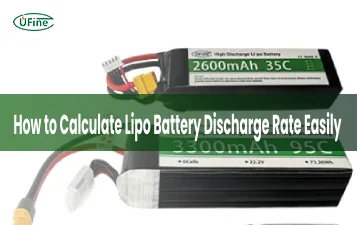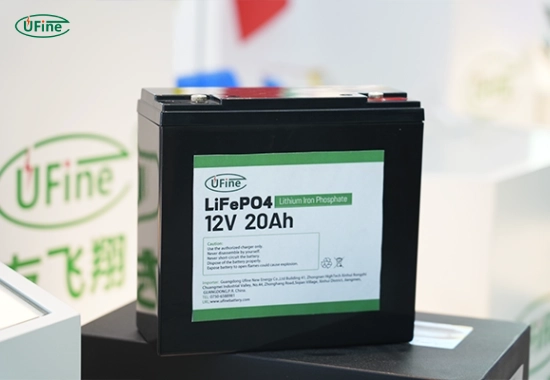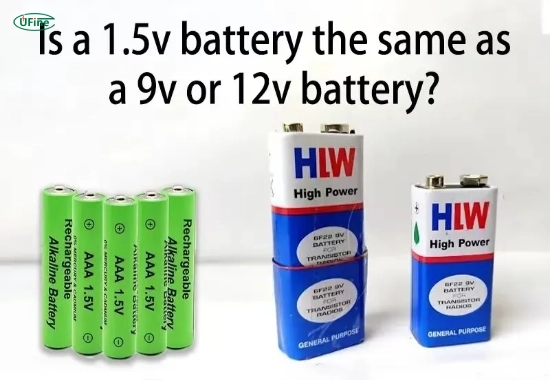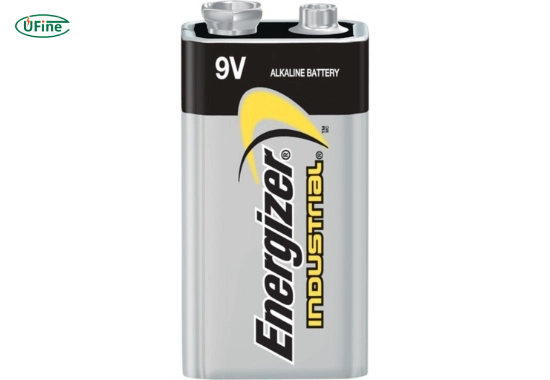When it comes to understanding batteries, a common question arises: Is a 1.5V battery the same as a 9V or 12V battery? This inquiry highlights the importance of battery voltage in determining compatibility and performance for various devices. This article will explore the differences between these batteries and their applications and answer frequently asked questions to enhance your understanding.
Part 1. Understanding battery voltage
Battery voltage is a crucial factor that affects how well a battery performs in different applications. It represents the electric potential difference between two points in an electrical circuit, effectively indicating how much energy is available to push electrons through that circuit.
What Does Voltage Mean?
Voltage can be likened to the “pressure” that drives electric current through a circuit. Higher voltage means more potential energy available for work, while lower voltage indicates less energy.
Why Different Voltages?
Different devices require varying amounts of energy to function optimally. For example:
- 1.5V batteries are commonly used in low-power devices like remote controls and toys.
- 9V batteries are often found in smoke detectors and guitar pedals, where more power is necessary.
- 12V batteries are typically used in automotive applications and larger electronic devices.
Part 2. Types of batteries
Understanding the types of batteries available can further clarify their differences and applications.
Common Types of Batteries
Alkaline Batteries:
- Advantages: Widely available, affordable, and have a long shelf life.
- Disadvantages: Limited capacity for high-drain devices; performance can drop significantly under heavy load.
Lithium Batteries:
- Advantages: Higher energy density, longer shelf life, and better performance in extreme temperatures.
- Disadvantages: More expensive than alkaline batteries and can be hazardous if punctured or improperly disposed of.
Lead-Acid Batteries:
- Advantages: High capacity, reliable for automotive use, and relatively low cost per watt-hour.
- Disadvantages: Heavy and bulky; they also require maintenance and can leak if damaged.
Nickel-Metal Hydride (NiMH) Batteries:
- Advantages: Rechargeable with higher capacity than alkaline batteries; less prone to memory effect than older nickel-cadmium (NiCd) batteries.
- Disadvantages: More expensive than alkaline; self-discharge rate is higher than lithium batteries.
Battery Chemistry
The chemistry of a battery plays a significant role in its voltage and performance characteristics:
- Alkaline: Provides stable voltage but has limited capacity for high-drain devices.
- Lithium: Offers higher energy density and longer life but can be more expensive.
- Lead-Acid: Heavy but reliable for high-capacity applications.
Part 3. What are the main differences between 1.5V, 9V, and 12V batteries?
When comparing different voltages, it’s essential to understand how they differ in terms of performance, applications, and compatibility.
Voltage Levels
- 1.5V Batteries are ideal for low-power devices such as toys, remote controls, and flashlights. They provide sufficient energy for simple tasks without overwhelming the circuitry.
- 9V Batteries are suitable for moderate-power devices like smoke detectors and musical equipment. They offer more energy than 1.5V batteries but still maintain a compact size. The increased voltage allows them to power devices that require more robust performance without taking up too much space.
- 12V Batteries: These are commonly used in automotive applications and larger electronics, such as power tools. They provide substantial power for high-drain devices such as electric vehicles or heavy machinery.
Performance Characteristics
The differences in voltage levels also translate into distinct performance characteristics:
- Energy Capacity: While all three types can store energy, the capacity (measured in milliamp-hours or amp-hours) varies significantly. A typical AA alkaline battery (1.5V) may have around 2000-3000 mAh, while a standard 9V battery might only have about 500-600 mAh due to its compact design. In contrast, a lead-acid battery (12V) can range from several amp-hours to hundreds, depending on its size and application.
- Discharge Rates: Different voltages handle discharge rates differently. For instance, while a 1.5V battery may struggle under high load conditions (like powering a toy motor), a 12V lead-acid battery can handle significant loads without immediate performance degradation.
Compatibility Issues
Using a battery with a different voltage than specified can lead to several issues:
- Device Damage: Over-voltage can cause overheating or malfunction.
- Underperformance: A lower voltage may need to provide more power for proper operation.
Part 4. Can you substitute one voltage for another?
This question often arises when trying to power devices with different voltage requirements.
Risks of Substitution
- Using a battery with a different voltage than specified can lead to:
- Device Damage: Over-voltage can cause overheating or component failure.
- Underperformance: A lower voltage may not provide enough power for the device to function correctly.
When is Substitution Acceptable?
- In some cases, devices may have built-in regulators that allow for slight voltage variations. However, it’s always best to consult the manufacturer’s specifications before substituting.
Part 5. Environmental impact of batteries
We should notice the significant environmental impacts of batteries.
Recycling Batteries
Proper battery disposal and recycling are essential to minimize environmental harm. Many communities offer recycling programs designed explicitly for batteries, which help prevent toxic substances from leaching into soil and water supplies.
Eco-Friendly Alternatives
Consider using rechargeable batteries as they reduce waste over time and often have lower long-term costs than disposable options. Rechargeable options like NiMH or lithium-ion batteries are becoming increasingly popular due to their efficiency and reduced environmental footprint.
Part 6. The importance of battery ratings
Battery ratings provide essential information about their performance and suitability for specific applications.
Understanding Amp-Hours (Ah)
Amp-hours indicate how long a battery can supply a certain amount of current before depleting its charge. A higher Ah rating means longer usage time at lower currents.
C Rating
The C rating indicates how quickly a battery can be discharged safely without damage. A higher C rating allows for quicker discharge rates, which is crucial for high-drain devices.
Part 7. FAQs
-
Can I use a 1.5V battery instead of a 9V battery?
Using a 1.5V battery instead of a 9V battery likely results in insufficient power for the device to operate correctly. -
What happens if I use a higher-voltage battery?
A higher voltage battery than specified can damage the device due to excessive power, leading to overheating or component failure. -
Are all batteries with the same voltage interchangeable?
Not necessarily; while they may have the same voltage rating, different battery chemistries and sizes can affect compatibility. -
How do I know what type of battery my device needs?
Check the device’s manual or look for labels indicating the required battery type and voltage. -
Can I charge non-rechargeable batteries?
You cannot recharge non-rechargeable batteries; attempting to do so can be hazardous.
Related Tags:
More Articles

LiPo Battery Discharge Rate Guide & Calculation Tips
Understand LiPo battery discharge rates, C-ratings, and how to calculate max current. Essential guide for RC, drones, and electronics users.
High‑Capacity 3S LiPo Batteries: 5000 mAh vs. 10000 mAh
Compare 3S LiPo 5000mAh vs 10000mAh batteries by weight, power, and use. Find the best fit for your drone, RC car, or boat setup.
Top 5 Applications for Small 3S LiPo Batteries
Small 3S LiPo batteries power drones, RC gear, wearables, and robotics with high energy and low weight. Making them ideal for compact electronics projects.
Building and Charging Your Own 3S LiPo Pack: A Step‑by‑Step Guide
Learn how to build, balance, and charge a 3S LiPo battery pack safely at home with this complete DIY guide for hobbyists and beginners.
How to Choose the Right LiPo Battery Plug Type?
Discover the best LiPo battery plug types, how to choose them, and expert tips for safe usage, soldering, and maintenance.







